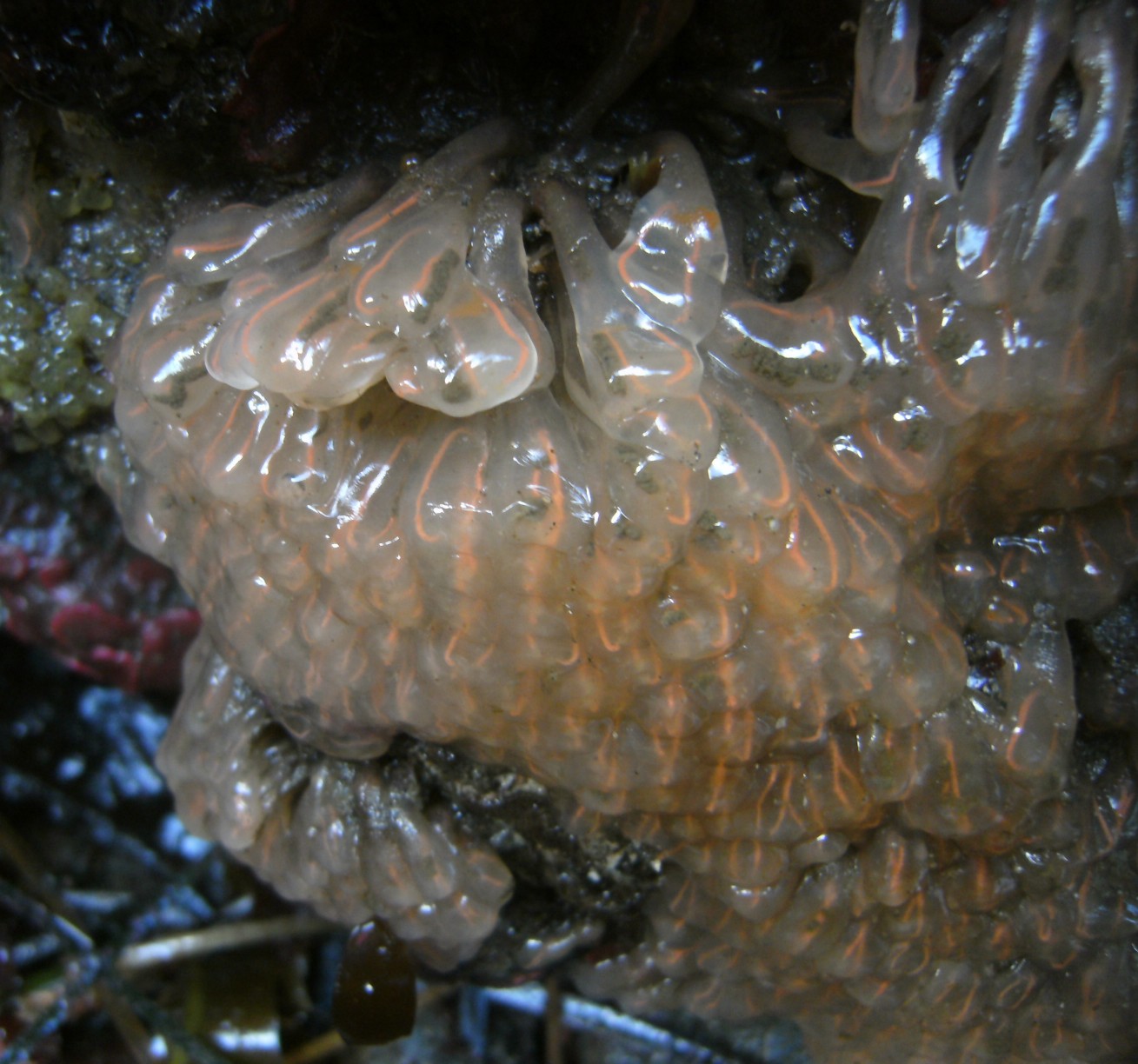Clavelina huntsmani, Van Name, 1931Common name(s): Lightbulb tunicate, lightbulb ascidian |
|
| Synonyms: |
 |
|
Phylum Chordata
Class Tunicata
Order Enterogona
Suborder
Aplousobranchia
Family Clavelinidae
|
|
| Cluster of Clavelina huntsmani zooids, each about 2.5 cm long, seen under an overhang at Cape Flattery. Note the distinctive two bright pink bands lining the pharyngeal basket. In several a bright orange ovary can be seen below the pharynx. | |
| (Photo by: Dave Cowles ) | |
The name Clavelina means "little club"
How to Distinguish from Similar Species: The large size and bulblike shapes of the zooids with their two bright pink lines are distinctive of this species. Clavelina sp has no pink lines and the margins of the apertures are lobed. A similar species, Clavelina lepadiformis, occurs in Europe.
Geographical Range: British Columbia to San Diego, CA. Very common intertidally in Monterey Bay.
Depth Range: Intertidal to 30 m depth. Mostly subtidal north of Monterey Bay.
Habitat: Rocky intertidal ledges and vertical surfaces on the open, exposed coast or in currents.
Biology/Natural History: The zooids of this species are more closely attached to other zooids when young but may be mostly separate (though still usually clustered) as adults. This species is annual, is most abundant in summer and early fall, and disintegrates in late fall. A few zooids (usually stolon tips from the colony) may be found in the winter. Bright orange larvae are brooded in the atrial siphon during the summer.
This shape, large size, and clarity of the tunic make this species a good one for studying tunicate structure and feeding. The pharyngeal basket fills the upper, expanded portion and the stomach, intestine, heart, and gonads are in the narrow stalk. The species is hermaphroditic: Usually an orange ovary surrounded by white testes can be seen in the stalk.
Look along the edges of the cluster for transparent stolons creeping outward. This is where new buds are being formed.
The amphipod Polycheria
osborni
may be found within the tunic.
| Return to: | |||
| Main Page | Alphabetic Index | Systematic Index | Glossary |
References:
Dichotomous Keys:Carlton, 2007
Kozloff, 1987, 1996
General References:
Harbo,
1999
Kozloff,
1993
Lamb
and Hanby, 2005
Ricketts
et al., 1985
Scientific Articles:
Web sites:
General Notes and
Observations: Locations,
abundances, unusual behaviors:
Authors and Editors of Page:
Dave Cowles (2010): Created original page
CSS coding for page developed by Jonathan Cowles (2007)
Rosario Invertebrates web site provided courtesy of Walla Walla University